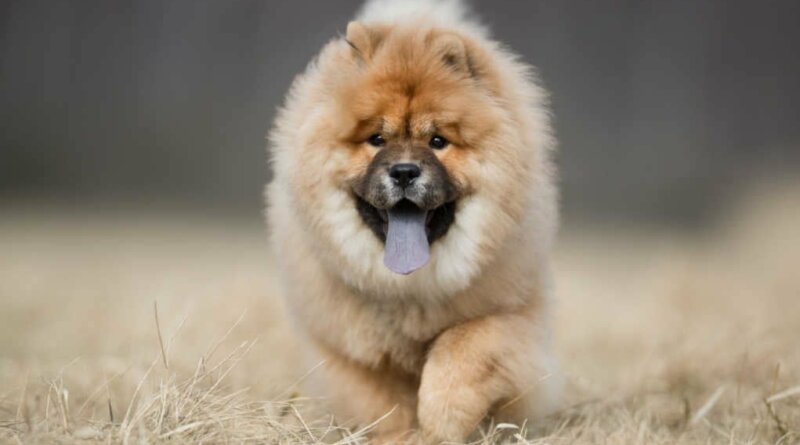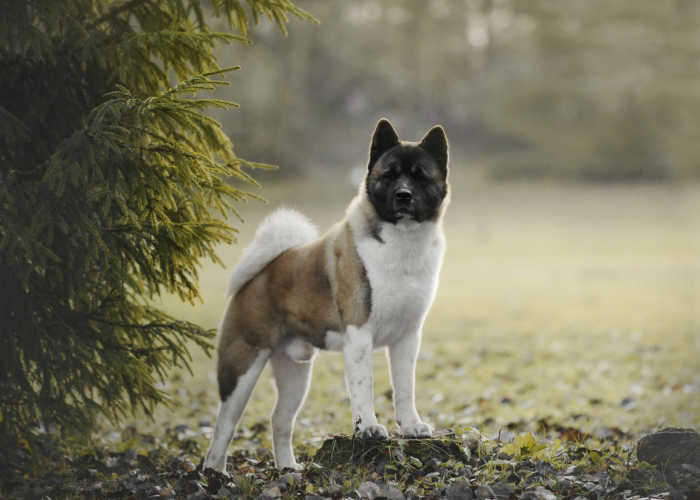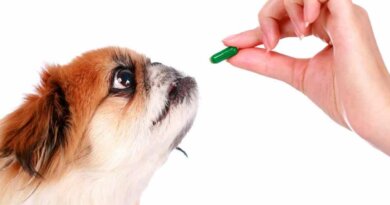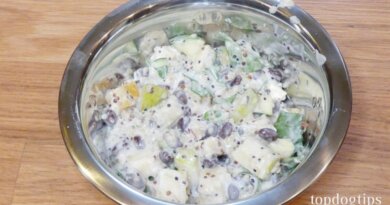10 Best Utility Dog Breeds – Top Dog Tips
The Kennel Club, the first acknowledged kennel club in history, currently recognizes 222 dog breeds categorized into seven groups.
Can you tell which of those are utility dog breeds?
Dogs initially bred for particular working tasks that are no longer applicable or those that do not fit into any of the other categories fall under the Utility Group.
Of course, they continue to play a crucial role as companion animals and are still capable of performing a wide range of tasks and participating in a variety of dog sports.
Utility dogs still refer to guard, rescue, and messenger dogs in some kennel clubs, like those in New Zealand and Australia, while others do not.
Working Group, which also includes dog breeds in the Pastoral or Herding Group, is how American and Canadian kennel associations refer to a group of dogs in the utility category.
The fact that many of the breeds in this group are among the oldest in the world may help to explain why they are no longer regarded as ‘useful,’ as they were not developed particularly for the needs of modern society.
In this article, learn about the most common utility breeds and their traits to see if they would make a wonderful addition to your family!
Our Top Picks of Utility Dog Breeds
As mentioned, utility dog breeds were bred to serve a variety of purposes, even more than any other group.
Although they are often described as “no longer fit for purpose,” most of them remained hardworking and devoted today, even though they cannot perform the same tasks as they formerly did.
Finding shared traits among utility dogs is challenging because they do not have a common ancestor and are all remarkable in their ways.
They come in various sizes, appearances, and temperaments, which is why research is important when deciding which kind of dog you would like.
Let’s take a look at the utility breeds in more detail.
Akita
- Height: 24 – 28 inches
- Weight: 70 – 130 pounds
- Life Expectancy: 10 – 14 years
Originating in the Akita Prefecture of northern Japan where it got its name, the Akita was a watchdog that became a symbol of protection.
It was designated as a national treasure of Japan and is still regarded as such.
The ancestors of the modern Akita were used for hunting bears, deer, and wild boar as late as 1957. Today, the breed is used primarily as a companion dog.
While also serving as therapy dogs, Akitas participate in all dog events, including agility competitions, conformation showing, the canine good-citizen program, obedience trials, and tracking tests.
Boston Terrier
- Height: 15 – 17 inches
- Weight: 12 – 25 pounds
- Life Expectancy: 11 – 13 years
The Boston Terrier, a native American breed, was developed in Boston in the late 1800s by crossing a Bulldog and the now-extinct English White Terrier. It was bred for pit fighting and vermin hunting.
Boston Terriers didn’t need to fight anymore when rules were put in place, and dog fighting started to decline. As a result, they evolved into the docile modern breed that we know today.
While their ancestors may have been fighters and hunters, the Boston Terriers’ nature today is all about love and kindness. In fact, they are among the friendliest and sweetest dog breeds around these days.
The breed is known for the loyalty and affection it shows its owners, making it the perfect family dog.
Bulldog
- Height: 14 – 15 inches
- Weight: 40 – 50 pounds
- Life Expectancy: 8 – 10 years
Bulldogs are said to have originated in England in the 13th century, during the reign of King John, for the “sport” of bullbaiting, which involved a staked bullfighting a pack of dogs while onlookers placed bets on the outcome.
The dogs used in this gruesome sport, the ancestors of today’s Bulldog, were vicious brutes with enormous jaws, incredibly fearless, and seemingly painless.
In 1835, England outlawed animal blood sports, marking a significant turning point in Bulldog history.
Bullbaiting gave rise to pit-dog fighting in basements, and blood sports literally went underground.
This illegal activity required faster, more energetic canines than the plodding Bulldog of the early 19th century.
By combining several terrier breeds with Bulldogs, gamblers produced their ferocious, four-legged gladiators.
As a result, early versions of the Bull Terrier, Staffordshire Bull Terrier, and other bull-type terrier breeds that are still in fashion today were developed.
The Bulldog was on the verge of extinction when bullbaiting became outdated. In response, Bulldog enthusiasts started the drawn-out effort of changing the breed’s reputation from brawler to companion.
The Bulldog’s aggressiveness was subdued, its physical features were improved for aesthetic purposes, and the breed was reimagined as a gentle and affectionate pet that is especially good with kids.
Dependable and predictable, this pooch is a wonderful family pet. Being a people-oriented breed, it eagerly seeks out human attention.
Bulldogs still possess the fearlessness that was initially bred into them for bullbaiting, making them excellent watchdogs.
Canaan Dog
- Height: 19 – 24 inches
- Weight: 35 – 55 pounds
- Life Expectancy: 12 – 15 years
Canaan Dogs got their name from the region that is now Israel, Lebanon, and a portion of neighboring nations.
Canaan-like dogs are depicted on artifacts dating back to 4,000 years, but the exact year the breed was formed is one of those canine milestones that has disappeared in history.
They are likely to have served as a shepherd’s helper for countless years, performing duties including herding, droving, and guarding.
Sentry dogs were required to patrol remote Jewish communities and train as K-9s for the developing Israeli army during the years preceding the establishment of the State of Israel.
Because only the strongest could endure such a precarious existence, Dr. Rudolphina Menzel, an Austrian cynologist who was residing in Palestine, recommended the semi-wild dogs of the desert.
This signified the beginning of the Canaan Dog’s domestication. The desert dogs quickly began earning their keep as sentries, messengers, assistance dogs, and landmine detectors since they were intelligent and very trainable.
After World War II, Menzel started breeding and raising Canaan as guiding dogs for the blind.
Believed to be the dog breed that the Hebrews used to herd and protect their flocks and encampments in biblical times, some are still used today by Bedouins and Druse for this purpose.
Chow Chow
- Height: 19 – 24 inches
- Weight: 35 – 55 pounds
- Life Expectancy: 12 – 15 years
The Chow Chow has played many roles during its long history.
One of the world’s most unusual and possibly oldest breeds, the Chow Chow is depicted in artifacts from China’s Han Dynasty.
However, evidence suggests that Chows date back much further and are the ancestors of other spitz-type breeds, ranging from the powerful Norwegian Elkhound to the delicate Pomeranian.
They served as lordly companions to Chinese nobles and also made a living over the years as carriers, guards, and hunters.
In the distant past of their densely populated, protein-deficient country, their ancestors were even a source of food.
Chow Chows were first displayed as the “Wild Dogs of China” at the London Zoo in the 1820s. It wasn’t until Queen Victoria, a devoted dog lover, bought one later in the century that they began to gain popularity in the West.
Today, they make good family pets but aren’t known for being playful or patient. Therefore, they are better suited to households without rowdy young children.
Chow Chows are not the ideal choice for novice owners since, in addition to being physically robust, they can also be rather strong-willed and stubborn.
Dalmatian
- Height: 19 – 24 inches
- Weight: 45 – 70 pounds
- Life Expectancy: 11 – 13 years
Surprisingly, little is known about the Dalmatian‘s origins, and there is no proof that the breed even came from Dalmatia.
What is known is that spotted dogs described in Europe, Asia, and Africa resemble modern-day Dalmatians. They also appeared in wall paintings from ancient Egypt, medieval manuscripts, and Italian frescoes.
Despite their versatility, Dalmatians are best known for their work as coaching dogs. They were able to adapt to numerous jobs, but in the 17th century, England adopted them as the preferred carriage dogs.
To defend their owners from the numerous dangers of the road, carriage dogs ran alongside carriages and riders on horses.
With their speed, endurance, watchfulness, and coaching sense, Dalmatians were an obvious choice since they were especially well-suited to road work and could easily keep up with the horses.
Dalmatians soon became useful in firehouses due to their natural coaching abilities.
They rush ahead and alongside the wagon to clear the streets and shield the horses from passing people and stray dogs.
These dogs were so proficient at their work that they continue to be the symbol of many firehouses today.
Dalmatians have served as guard dogs, shepherds, hunting dogs, and draft dogs, but probably their most noteworthy use was as performers in plays and circuses.
They were natural performers thanks to their unusual looks and strong recall, delighting their audiences with their clowning and stunts.
Today, Dalmatians continue to perform a variety of tasks, but their most important functions will always be remembered by their many nicknames: the English Coach Dog, Carriage Dog, Fire House Dog, and Circus Dog.
French Bulldog
- Height: 11 – 13 inches
- Weight: under 28 pounds
- Life Expectancy: 10 – 12 years
Contrary to its name, the French Bulldog’s history actually started in England. Lace workers in Nottingham kept miniature bulldogs to chase away rats from their cramped workspaces.
Lace workers were replaced by machines at the height of the Industrial Revolution in the 1800s, forcing many of them to relocate to France, where lace was still created by hand.
The smaller bulldog that arrived with the laborers was adored by the French, and after decades of crossbreeding, the breed developed its recognizable bat ears, giving rise to the French Bulldog.
The breed quickly gained popularity in Paris, and soon every actor, artist, and celebrity in the city desired one.
Americans traveling abroad loved the toy version of the bulldog, and it didn’t take long for Frenchies to become popular in the United States as well.
The rest is history, as French Bulldogs have gained popularity as well-behaved home pets all around the world.
Due to their low energy and ability to adapt to any environment, including a small apartment, French Bulldogs are among the most popular dog breeds. Additionally, they feel at home in either a family or solitary setting.
All of the warmth and love that we humans can muster, Frenchies yearn for. They like playing with children and other dogs just as much as they enjoy becoming couch potatoes.
Nederlandse Kooikerhondje
- Height: 15 – 16 inches
- Weight: 20 – 30 pounds
- Life Expectancy: 12 – 15 years
The Kooikerhondje was developed in the Netherlands sometime around the 16th century as a breed to be used in tolling, a method of luring ducks into traps.
They were used to lure fowl into canal-shaped cages with traps at the ends (kooien), where the hunter, known as a “Kooiker,” could easily catch them.
The dogs that the Kooiker used for this type of hunting method were known as “Kooiker’s hondjes” (literally, “Kooiker’s hounds”). This ultimately resulted in the dog being given the name Kooikerhondje.
After the First World War, the breed started to decline as hunters could more easily shoot ducks thanks to improved fowling rifles.
The Duck Decoys were no longer as profitable and less appealing to keep. With them gone, so too came the decline of the orange-red-and-white dog that was once used to lure the ducks.
The breed almost became extinct until Baronesse von Hardenbroek van Ammerstol began her efforts to preserve it in late 1939 as part of her opposition to the invasion of the Netherlands.
Today, the Kooiker tends to be a fun and active companion for those who like the great outdoors
It is often regarded as being exceptionally skilled in a wide range of canine sports, including agility, barn hunting, dock diving, nose work, rallying, and tracking.
Need a mate on your boat? This pooch will gladly join you for a swim in any body of water or may even hop on your paddleboard to go for a ride.
Jindo
- Height: 17 – 22 inches
- Weight: 30 – 50 pounds
- Life Expectancy: 14 – 15 years
Off the southwest coast of South Korea, there is an island where the Jindo breed was first discovered. The island’s name, Jindo, served as the inspiration for its name.
The Korean Jindo evolved into a natural breed with reputable hunting skills as a result of living unrestricted with their owners on the island for thousands of years.
These dogs could travel great distances and hunt both small and large game, including water deer and wild boar.
In 1962, the Republic of Korea classified this breed under Act No. 53 for the Preservation of Cultural Assets. Thus, it is Korea’s Natural Treasure #53.
In more recent times, humans typically keep Jindo dogs as devoted companions and watchdogs.
The breed does not have the right disposition for police work because it gets easily distracted and usually gives its loyalty only to its first owner, while search and rescue dog handlers frequently change.
Additionally, Jindo dogs were deemed unsuitable for use as military canines due to their strong tendency to evade orders to find their first handlers, who might have been released from the military or returned to their original residence.
Schipperke
- Height: 10 – 13 inches
- Weight: 10 – 16 pounds
- Life Expectancy: 12 – 16 years
The Schipperke originated in Belgium in the late medieval period. It is thought to be the descendant of a now-extinct breed known as the Leauvenaar.
On the canals that crisscrossed the Low Countries, the breed became well-known as naval pest controllers.
This little black watchdog was not just a fierce guardian of the dockyards of Belgium but also of the city’s stores.
The sailors and merchants of Brussels and Antwerp gave the nickname Schipperke, which is Flemish for “little captain,” to these swift, agile dogs.
Queen Marie Henriette of Belgium popularized the Schipperke when she adopted the breed as a pet in the late 19th century.
Today, it is bred for companionship but goes by the nickname “Little Black Devil” for its mischievous antics.
These black pups are wonderful family pets because they are exceptionally kid-friendly and get along with cats and other dogs just as well.
Since Schipperkes were bred to work, give your pet a task to do, whether it’s training for agility, obedience, or any other canine sport, and he will succeed.
FAQs about Utility Dog Breeds
What is the purpose of utility dog breeds?
Utility dog breeds performed a variety of tasks, such as guarding fire trucks and noblemen’s carriages, luring ducks, and serving as a warning system for barge owners and monks.
Even today, people still use several utility breeds for sledding, rescue missions, and flock protection.
Which dog breeds are in the utility group?
The Kennel Club recognizes the following breeds in addition to those stated above as members of the Utility Group:
What defines a utility dog breed?
A dog will likely be classified as a utility breed if it doesn’t fall into another breed classification.
Utility dogs weren’t bred for sports but rather for a particular function (that doesn’t fit under the pastoral or working categories).
Utility Dog Breeds: Final Thoughts
The word “utility” basically implies “fitness for a purpose.”
Members of the utility group have non-sporting ancestry and were bred to carry out particular tasks in the past. As their name suggests, most of them were created to improve our lives.
So, are they the dogs that you want?
People purchase utility dogs without the ability to commit to the lifetime of these animals. If you want to bring a pup home, consider adopting one.
There are many utility breeds in need of fostering.
Still, gather more information before getting a puppy to see compatibility with your lifestyle.
You may visit various breeders and see the dogs yourself. Find a reputable breeder who will show health clearances to prove that the dogs are clear of health conditions.
Either way, utility dog breeds are great companions and can be just the companion you need if their traits fit your lifestyle.
READ NEXT: 31 Herding Dog Breeds














